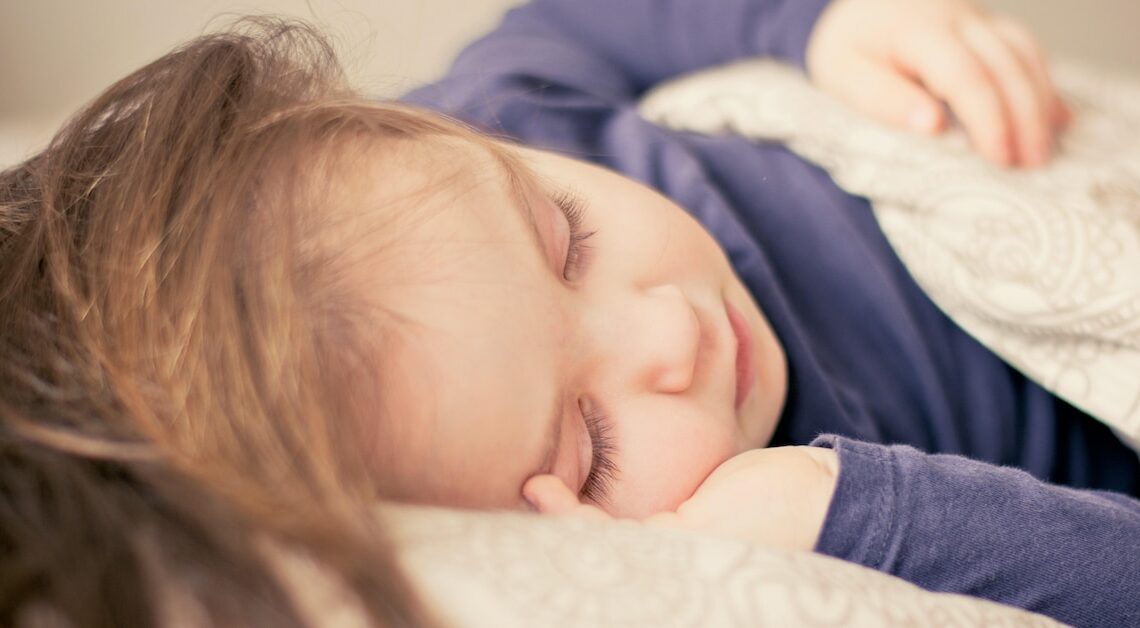
Small children need a nap. But how long and at what age the child can go without it is controversial. Sleep solutions are as individual as the little ones themselves.
Small children need their afternoon nap
Everyone needs sleep to recharge, regenerate and process experiences. The youngest children in particular – from babies to toddlers – are bombarded with a wealth of new impressions every day. In addition, the body grows disproportionately: This is why children require more sleep than adults.
- The younger the child, the shorter the duration of waking or sleeping phases. The total sleep duration gradually decreases.
- In total, an infant needs about 14 to 17 hours of sleep up to the age of three months, and then about 12 to 15 hours. So two naps a day are definitely appropriate until your child is about a year old and even beyond.
- From the first to the third year of life, the total sleep requirement decreases to about 11 to 14 hours a day. Now you should make sure that your child only takes one – but actually restful – nap.
- At the age of three to five, your child will need an average of 10 to 13 hours of sleep. However, if your child does not sleep as long at night, it is still a good idea to allow some rest during the day.
Finding the right rest time
A regular daily routine helps the child to get the sleep they deserve. However, the daily activity planning is often based on the child's need for sleep. The following figures provide a rough estimate of the necessary sleeping times:
- In general, the time between 12 and 2 p.m. is considered to be a good time to rest. The natural biorhythm usually requires a break then anyway.
- For kindergarten children, it is best to plan a nap after an early lunch. Your child will be a little more tired anyway due to the digestive work that is to be done.
- If your child is still young and needs two naps a day, the first rest period should be moved to the morning and the second to a little later in the afternoon.
- The length of bedtime will vary greatly from child to child, but one to two hours of sleep should be enough for toddlers aged three and up.
- However, keep in mind that the need for sleep may increase again in the short term as developmental spurts occur.
- However, if you notice that your child has difficulty falling asleep in the evening or even sleeping through the night over a longer period of time, then it is probably time to shorten the afternoon nap or eliminate it altogether.
When people rebel against sleep
Even though it is certain that every child needs rest, it is not always possible to have a nap. However, you can support your child's readiness to sleep with a few simple measures.
- Give your child a helping hand to ensure a healthy nap. Establish a rhythm in the day that signals at lunchtime that it is time for a break and rest.
- Consciously incorporate rituals for this. Reading a nice story or playing quiet music can be signs that it's time for a rest break.
- You should dim the daylight in the bedroom a little. Ensure a cool and calm atmosphere in your child's rest area.
- You can also rest a little or even take a nap in the same room as your child. This can be especially helpful for children who are generally very active and have difficulty winding down.
- If your child absolutely does not want to take a nap, then do not put them through an unpleasant test of strength. Stay calm and still offer your child a break with some relaxation: reading and looking at a book or listening to an audio play are good alternatives.
- Also adjust the kindergarten pick-up time to your child's sleep needs. If it is offered, a nap in kindergarten can be a good idea.
- On the other hand, it is unfortunate if your child takes a short nap on the way home, which would prevent him or her from having a good night's sleep afterwards.

Discussions about how much and when children should sleep are also common in later childhood. In the next practical tip you will find information about when children should be sent to bed.
